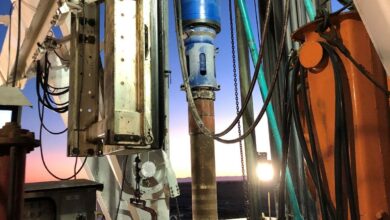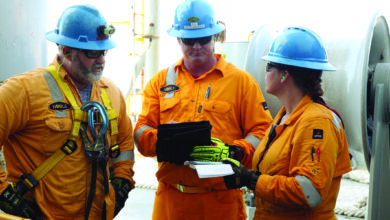Environment, Social and Governance
New drilling emissions reporting tool aims to accelerate oilfield decarbonization
RigCLOUD recently released its Drilling Emissions Reports, designed to help users optimize engine utilization and reduce their carbon footprint. The tool is available to both drillers and operators.
The tool provides accurate and reliable data on fuel consumption, greenhouse gas emissions, CO2 per foot drilled, average engine load and average number of engines online during each drilling activity. To optimize emissions output, drilling contractors and operators have visibility into the minimum engine requirements throughout the well construction process. This capability enables customers to reduce their environmental impact without compromising operational performance.
“By deploying emissions analytics and advanced engine management, we are empowering anyone who is contracting or operating a rig to make progress on their sustainability commitments,” said Carlos Rolong, Senior Director of Operations at RigCLOUD.
Engine optimization and management solutions will soon be made available as well, according to RigCLOUD. The additional systems will provide activity-based estimations of peak power demand using AI-based predictions. Similar to modern cars with auto-stop features, rig engines will cycle on or off as required during certain drilling activities.
Nabors is already using RigCLOUD’s technology across its rig fleet to improve its carbon footprint, according to Subodh Saxena, SVP of Nabors Drilling Solutions.

Environmental partnership report details member progress
The Environmental Partnership highlighted the industry’s commitment to reducing its climate footprint and methane and flaring from operations in its third annual report, released 9 September. Highlights include:
• Flare volumes were reduced by more than 50% from 2019 to 2020, even as oil and natural gas production remained consistent. Participating companies reduced the gas flare intensity of their operations from 3.04% in 2019 to 1.49% in 2020. More than 171,000,000 million cu ft of flare gas were avoided or diverted from flaring.
• More than 430,000 surveys were conducted across more than 85,000 production sites as part of the Leak Detection and Repair Program. Of the more than 235 million component inspections performed, only 0.04% were found to need repair.
• More than 970 high-bleed pneumatic controllers have been replaced, retrofitted or removed from service – a significant step to reducing greenhouse gas emissions. Notably, 54 participating companies reported they suspended use of high-bleed pneumatic controllers in operations.
Apache eliminates routine flaring in US onshore operations
Apache has ended routine flaring in its US onshore operations, achieving one of its 2021 ESG goals three months ahead of schedule, parent company APA Corp announced in a statement in October.
Prior to 2021, Apache’s majority-owned midstream company, Altus Midstream, invested more than $850 million in two new natural gas pipelines, and Apache made firm transportation commitments on both pipelines to help underwrite and ensure construction of that infrastructure. APA said this capacity investment was “an important and necessary element to move gas to market,” significantly reducing the practice of flaring for operators throughout the Permian Basin.
Valaris details efforts in 2021 Sustainability Report
In its 2021 Sustainability Report, released in September, Valaris reported a 26% reduction in its total CO2-equivalent (CO2e) emissions year-on-year from 2019 to 2020. Total CO2e emissions decreased from 998,771 tonnes in 2019 to 736,491 tonnes last year. The report noted that, because absolute emissions are highly correlated to operational activity, the emissions reductions reflect reduced rig activity due to the COVID-19 pandemic and lower oil prices.
Valaris also noted other actions it took last year to reduce emissions. The company’s GustoMSC P10000 drillships, which are already designed to operate in a closed bus configuration to reduce emissions, were equipped with selective catalytic reduction technology for NOx emissions reduction. Further, “Green DP” upgrades to the VALARIS DS-12 drillship led to a 2% fuel usage reduction during a well completed in 2020.
Valaris also started converting its remaining drillships that were not already designed to operate in a closed bus configuration. It also built a near-real-time emissions tracker that uses signals for the rig’s control systems to report engine load, fuel usage and emissions. The company expects that all of its rigs will be added to the reporting tool throughout 2021.
Further, the company is working on electrification of jackups. Once executed, modified jackups will be able to store waste energy from the drilling process in battery packs to reduce the energy required from diesel generators. They will also be able to run from shore power if the host platform is connected to the grid. Hybridization of drillships is also under way.



